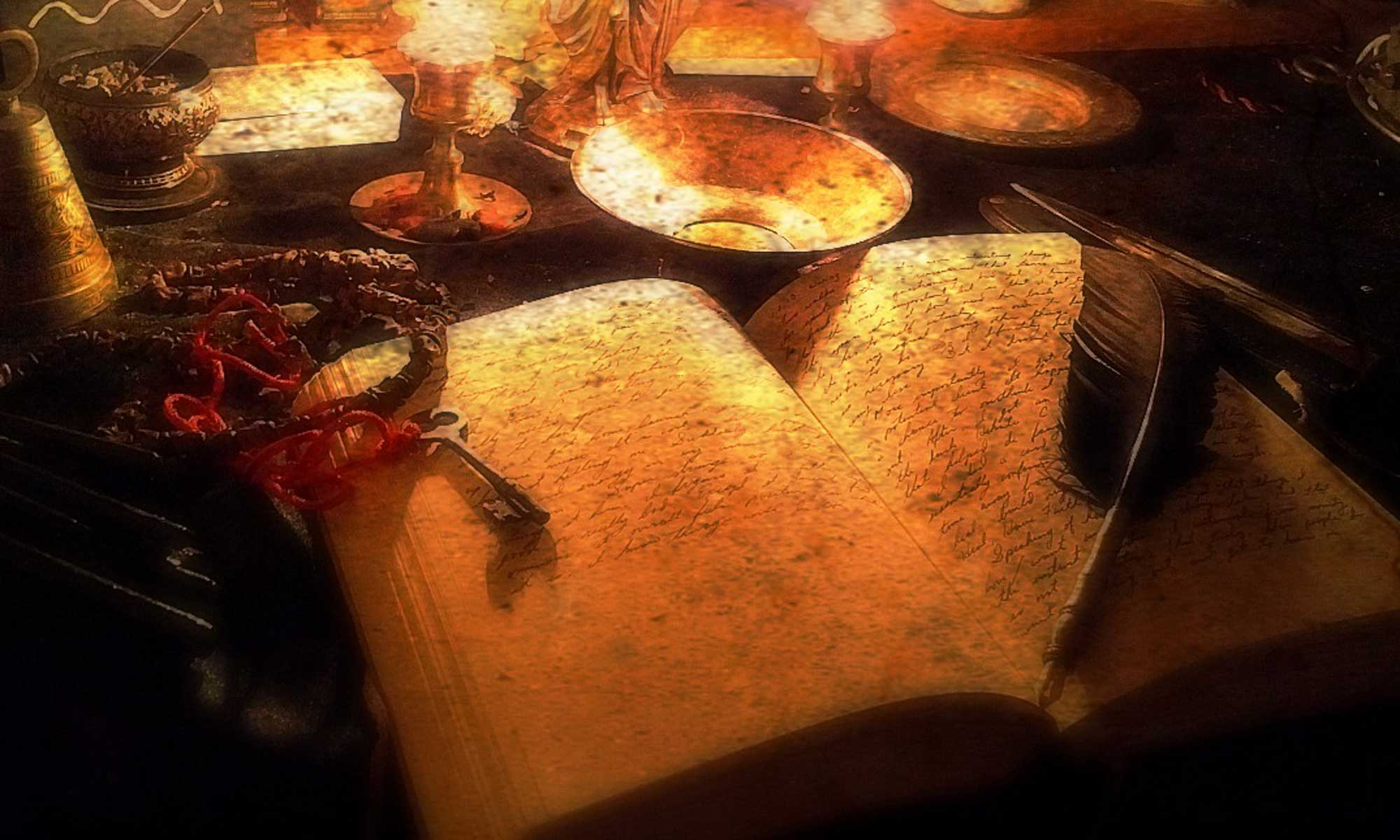I wrote a post last year about Elemental Water, with the intent of writing one about Elemental Earth.
But anyway, I built a deck. (Well, I helped my dad build stairs for a deck.) And a website. And I did some rebuilding on my personal beliefs and values. And I think there’s something here, in the way that we move earth and create structures to support our daily lives.
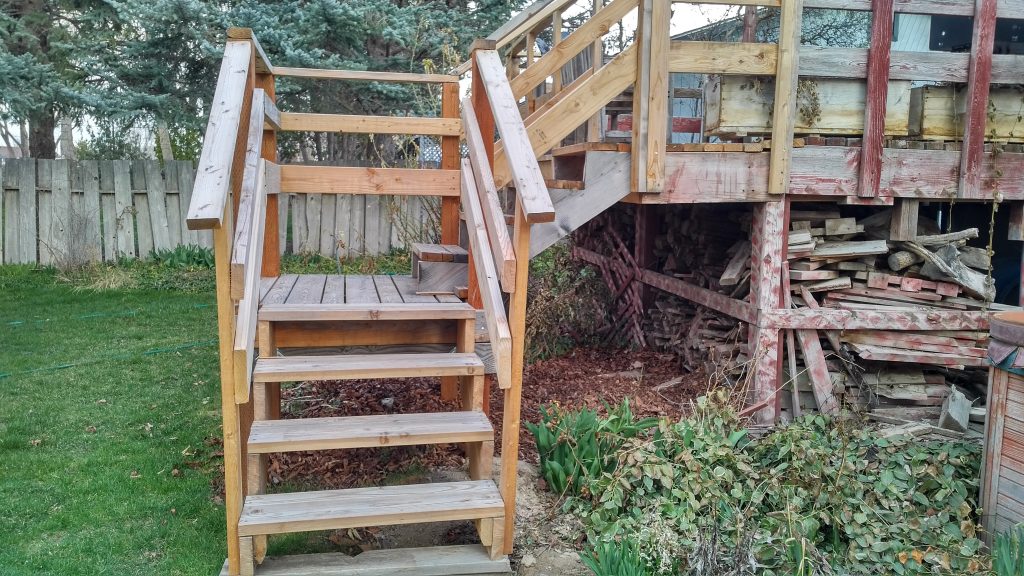
Not another gods-damned element post
I have this project I’m working on, about how elements and Pagan practices function in the desert. I thought someone had recently written a book about this, but after about a half-hour of google-fu, I can’t seem to find it. (Shoot me a link if you know which book/author I’m thinking of.)
And I thought, “You know, maybe I could discuss the different ways that the elements manifest in the desert, because it’s different from the way magic manifests on, say, the coast where there’s plenty of water.”
Only, I’ve seen a metric fuck-ton of Pagan books organized around the elements. I have a lousy one sitting on my desk right now. So, if I’m tired of it, other people probably are too.
Accordingly, I ask your forgiveness for the tired old “elemental Pagan post” here. Hopefully some of these ideas will be fresh and interesting, and challenge you to think about your life and your magic in a different way.
Dirt and soil
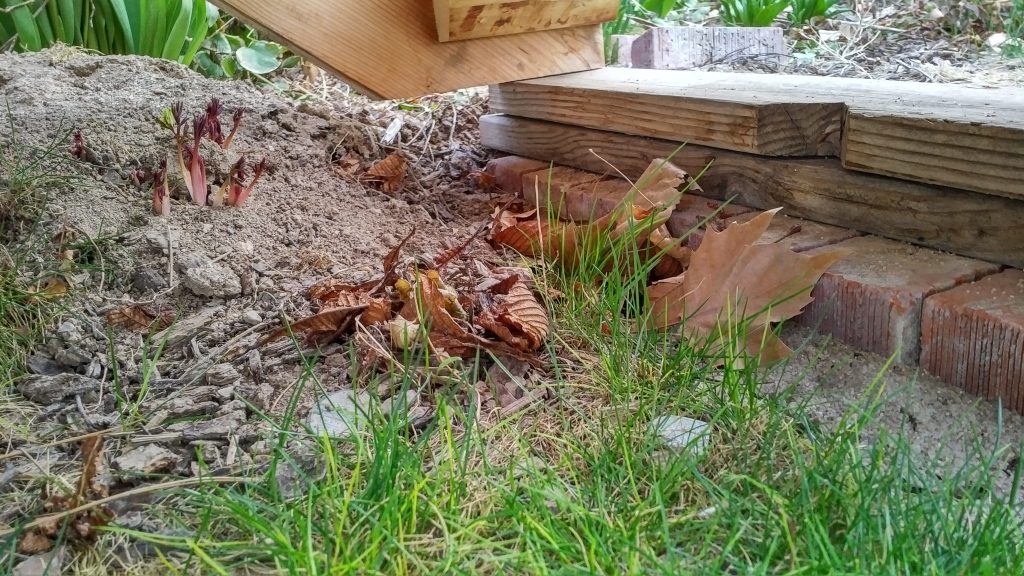
We don’t really think about dirt very much. I mean, we sweep it off our furniture and out of our homes when we’re cleaning. We scrape it off our shoes before we come inside. Some folks dump dirt into a pot, and poke a seed into it with some water. You may be familiar with dirt roads (and all their questionable charm).
So dirt isn’t inherently bad. We walk on it all day long, and it’s the origin of the food we eat. Like water, there is an appropriate place (and shape) for dirt.
When building dad’s deck, the first thing that had to happen was anchoring the base of the stairs to the ground. Now you might think that’s a pretty simple thing, but the ground wasn’t level, and it had poor water drainage. (Pooling water could cause the wood to rot).
This speaks to the ability of earth and soil to facilitate growth. In this case, we don’t want the growth of bacteria and fungi, which would damage the wood. But we could take that soil and put it somewhere else to level the ground, or we could put it in a planter pot for growing flowers.
There is a mystery here, if you care to examine it a little closer. Consider Earth not just in its aspect of “rock” and “stability,” but “structure,” as in providing the structure for a plant to send roots into. Consider how that structure offers not just physical structural support, but also holds on to nutrients and moisture that the plant needs. The plant has to take the nutrients, and has to do the work of pushing the earth aside as the roots grow. But the earth holds onto those things, as a sort of unlocked potential.
So anyway, to build the deck we had to move some dirt. With a shovel. Which, if you think about it, is probably super relevant to starting any new project in your life. You need to do some work — actual work, not just “thoughts” or “intentions,” but picking up a shovel and digging. In this case, we dug a long, narrow hole to start on the base of our stairs.
Sand
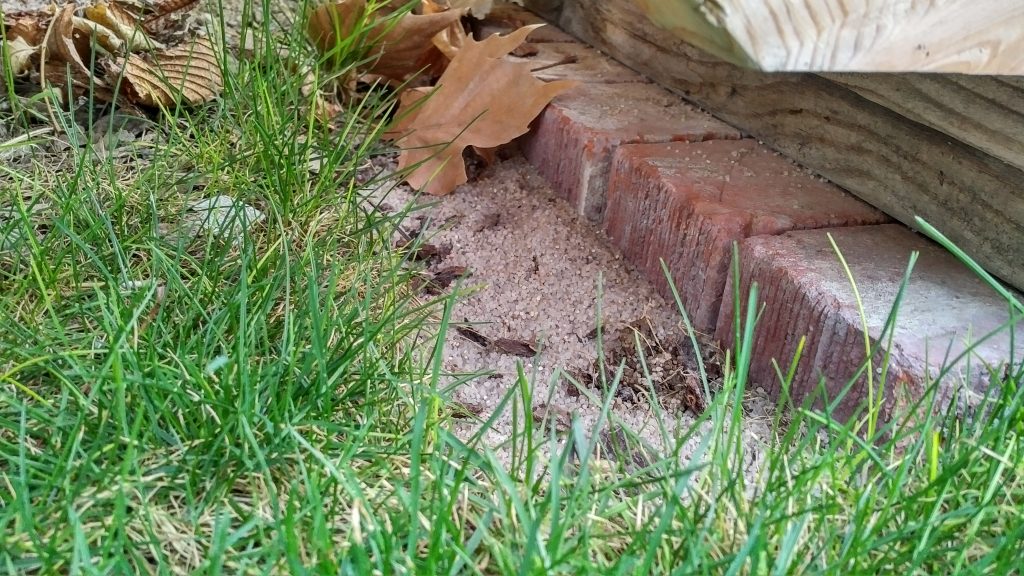
When I think of sand, I think about coarse silica sand that looks like little balls, about the size of those little styrofoam balls that break off packing material. But this is a specialized form of sand specifically used for well drilling, and your idea of sand is probably a little different.
Other kinds of sand are beach sand, which includes tiny fragments of rock and glass and seashells, desert sand which may be rounded or sharp, or hourglass sand. Maybe sand-dune-sand, or sandbox-sand, or something like that.
So after digging a hole, we filled it with sand. Two main reasons for this were that a) it’s easier to shift things around to seat the base of the stairs, and b) the holes between the sand grains are large enough to let the water drain.
A recent post I read on magic talked about using magic to cross a big gap in your life. It suggests that many people try to fill the gap between [where you are right now] and [where you want to be] with a few big boulders. (The boulders represent large actions or enchantments.) But in reality, it’s a whole bunch of little decisions and actions and enchantments that actually get us across. Like sand.
Incidentally, this idea works pretty universally across metaphors. It’s a lot easier to make a whole bunch of little decisions and actions to bridge the gap between [where you are] and [where you want to be]. Want to get a black belt? Each training class is a grain of sand. Want to be a musician? Each time you practice is a grain of sand. Boulders, then, would be like the “silver-bullet” solutions, the one-clean-shot-to-fix-my-problems type of thinking. Which are a) a lot of effort and b) place a lot of faith in one or two actions, which c) can roll or go wonky and mess up your project.
In reality, unless you’re one of those rare people who can fix things by flipping an internal switch or shooting a personal demon with a silver bullet, filling the gap is the result of a whole bunch of tiny actions and choices. A.k.a. sand.
And because sand is a bunch of little chunks of stuff (or metaphorically, small actions and choices), a mistake with one doesn’t undo the results of all the others. And it becomes a lot easier to adjust and shift around all those other little grains in order to make the bigger things fit. And when you do put bigger stuff on top of your sand (or pile of actions and choices), not only is it easier to make them fit, it offers superior support to bear the weight of those bigger things.
Bigger things like bricks
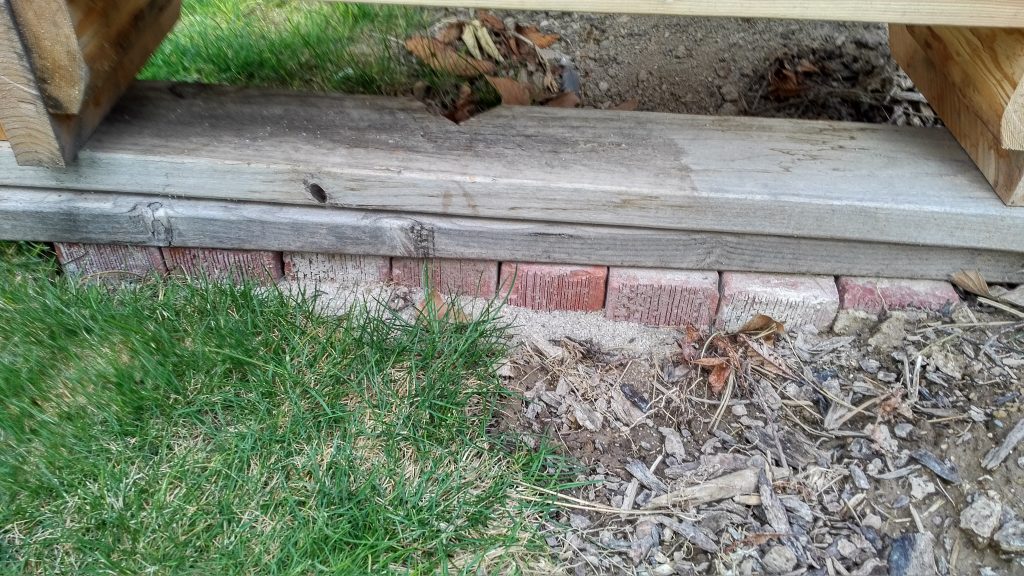
You should be able to see that, on top of the gray sand, we used lie a line of red bricks. One interesting thing about bricks is that they are a) solid like stone, and b) manufactured in a specific shape.
Ever been to your local courthouse? It’s probably made of stone, like marble. Or maybe the interior has polished flagstones that you walk on. That effect is pretty impressive by itself. Now consider the effort that goes in to cutting a block of stone from a quarry, then polishing it, then hoisting it up to put it in place.
I mean sure, polished stone is impressive, and it lasts a long time. But that permanence takes a lot of effort. (And machinery.)
So bricks work as a compromise. More permanent and weather-resistant than wood or soil, easier to work with than cut marble. By building a solid foundation with these blocks of solid building material, we created a foundation that will allow the stairs to be fully supported, well-drained, and still bear the weight of people walking up and down the stairs.
Your beliefs might function like bricks in your life/magical practice. Or you might have a set of basic techniques and skills on which you base your practice. These are the big things, important and foundational. Your world would (rightly) be rocked if one of these broke or shifted, so it’s a good idea to be intentional with the bricks you choose to build your practice out of.
Have you ever known someone (or been someone) who had a crisis of faith? Where things you held deeply as true were revealed to be false? I have (on both counts). You go a little crazy when this happens. Like when your deck rots and starts falling apart, and maybe someone trips and almost tumbles down. But it’s also an opportunity to build a good, solid foundation to support your new deck. (Ahem, I mean spiritual practice.)
Wood
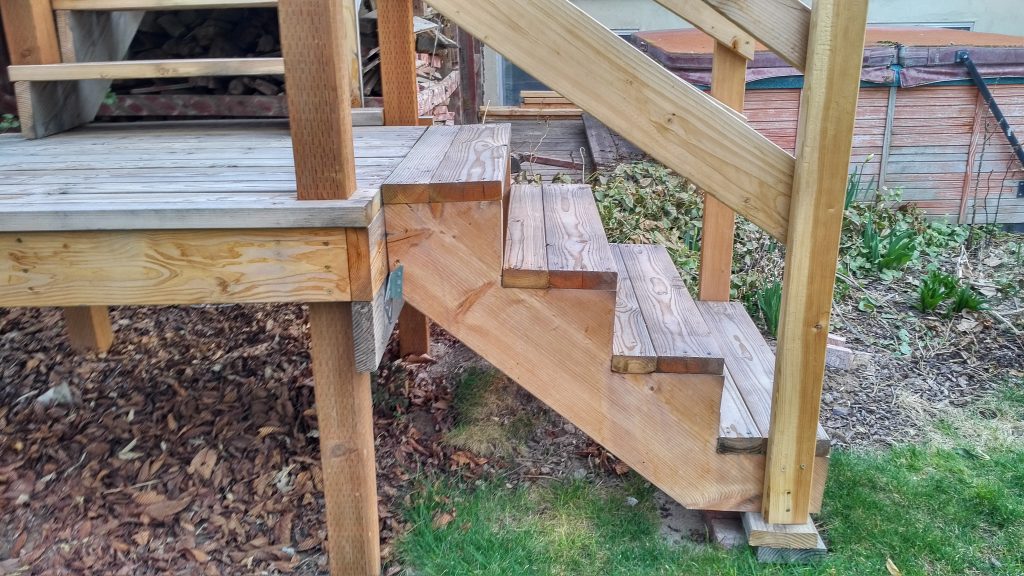
To me, Wood seems to fit in with elemental Earth. Perhaps because it’s solid, you can build with it, and it grows out of the soil. Even more than brick, wood can be cut to the shape you need. And assembled. But there are some things to be aware of with wood.
Wood works like a compromise between the solidity of stone and the fluidity of water. (Maybe because trees need both soil and water to grow?) Wood is easier to cut and shape than stone. It can be hauled around and moved more easily. It lasts a long time, and its lifespan can be increased with treatments like paint or lacquer.
Different woods have different grain structures, which respond differently to stress. We used pine in this project. It has long, straight-ish grains which bear weight well. It does require a seal coat; we left the wood unfinished over the winter, and moisture has seeped in and cracked the wood near the grains.
Other woods, like Oak, are harder to work, but some folks like the way they look finished. Exotic woods like Mahogany are usually used in high-end furniture for their interesting swirls and patterns, but might not be worth the expense for an outdoor deck. Softer woods like balsa-wood are used in craft projects, or for their extremely light weight – but would not be strong enough for a large project like a deck.
For the combination of cost, durability, and ease of use, wood is often the choice for building projects. I mean, can you imagine a wrought-iron deck? Cool, but heavy and expensive. Or a plastic deck? Just no.
Like digging out the soil, we had to shape the wood to fit our needs. Each support beam was cut from a single two-by-twelve piece of lumber, with a zig-zag cut out for the stairs. Each stair piece had to be cut to length, then attached with screws. Someone will probably replace this deck in another 40 years, which is an excellent compromise between structure and longevity.
Fasteners
Screws, nails, and brackets, all made out of steel. So, again, Earth. And like bricks, these are Earth molded into shapes that are useful for getting things to stick together.
We put the stairs together, got the steps all bracketed in, supported, and screwed together. And then we walked up and down the stairs. And I’ll be damned if it didn’t feel like walking on solid ground.
There was a slight glitch in one of the measurements. Dad said, “Walk on it, your feet will tell you if it’s level or not.” And sure enough, I could feel the ones that were a little out of whack. Everything was still rock-solid, but the ones that were mis-measured were tipped forward just a bit.
There are a couple of mysteries here, if you care to ponder on it.
Implications
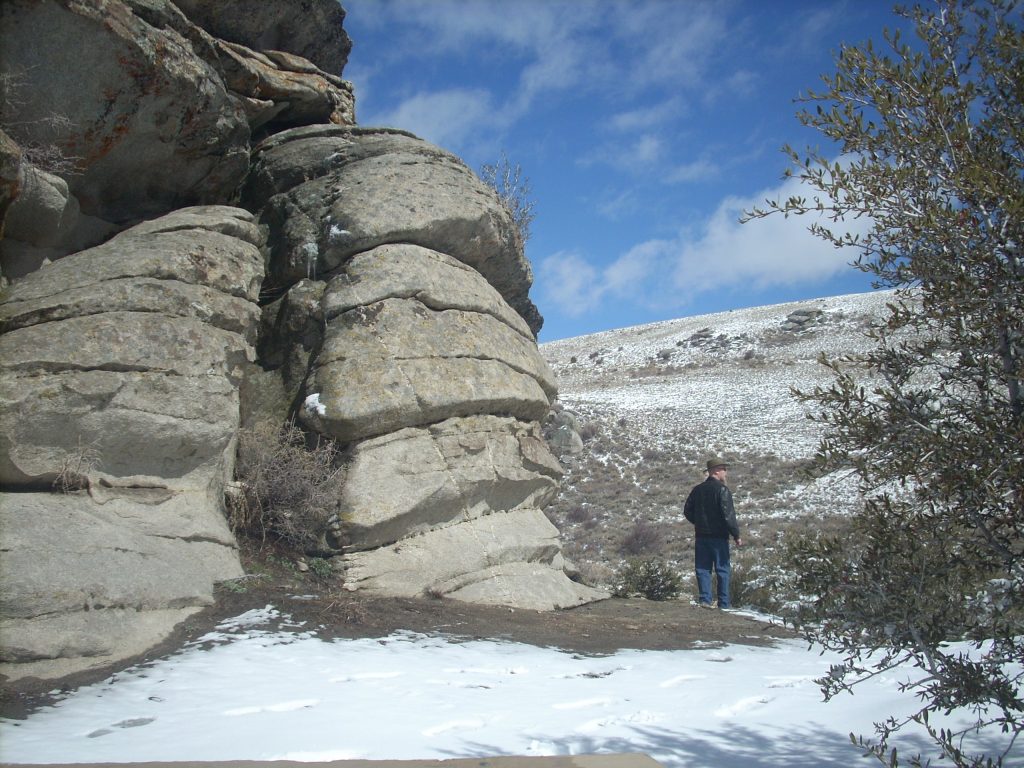
So what do we do with all this?
Well, first of all, you don’t have to accept your life the way you find it. You can use a shovel to move the dirt around, or wood and brick and steel to build something different.
You can build structures in your life that are custom-fitted to their application. Like a brick for supporting a larger structure, or a sand-pit for water (emotional) drainage. Earth can be used to fasten things together, like a gold ring to fasten two people together. Or maybe a piercing to symbolize commitment to a spiritual path.
Because Earth has to be moved, shaped, cut, and fastened, your life-structure will work better if it’s built to a plan. For example, you want to buy a house. You map out the things you need, like a blueprint. You save for a down-payment, which works like creating a solid foundation. You have a home inspection, which tests the stability of your structure. Maybe you look at property insurance to work like a support beam, to keep your home supported in case of an emergency.
If you measure before you build, and include a decent amount of architectural support, your plans will be a lot more solid. Solid, in this case, means resistant to disruption. So, a good plan will be able to weather things like a low paycheck, or an unforeseen expense.
Earth doesn’t move with intent, it moves with work. You can’t just wish something was different. You have to actually put your hands on it and expend physical energy to make Earth move.
Even if a rock is broken apart into thousands of tiny grains of sand, it’s still Earth, and still retains some of those properties. And can actually function better than solid rock for some applications.
Earth facilitates growth, providing the structure for plants to grow, take in nutrients and water, and stand upright. It can also hold water and allow mold and bacteria to grow in places you might not want. So be mindful and intentional about the combination of Earth and Water.
If you’re looking at Earth as a metaphor for spiritual energy (or even tuning in with Earth as an elemental force), I think a lot of these things still apply. Earth doesn’t like to move, so it’s great for structure or stability. It takes work to move or change your spiritual beliefs or structures. Earth tends to be heavy. It also provides substance in which other spiritual practices can grow, or on which other things can rest. So you might make daily meditation a “rock” on which you base the rest of your practices. Or you might spend some time carving out a mythological belief system, which works to provide meaning and opportunity for your practice.
Dealing with unwanted Earth can be difficult. One example is when physical objects impact the human body. It can be annoying like a splinter, traumatic like a flying brick, or even deadly like a bullet. It can be the unyielding Earth of a set of stairs you’re falling down, which bruise your body before they yield. Since we live in the physical world, it’s helpful to have a mind for your physical safety when dealing with solid objects.
Final Thoughts
I feel like there’s a lot of Paganism that’s mostly in our heads. That can be fantasy wish-fulfillment, like pretending fairies and dragons are really visiting you in person, or it could be imagining that running a group in which no one has to work or pay money is somehow feasible.
This article series is an attempt to get us out of our heads, and into the real world. How do the Elements work if you’re a plumber? Or a drywall installer? Or a bank teller? What can we do with different elements? How do we manage them?
And it’s a reminder that we do live in a physical world. And making changes often takes work, effort, time, money, or materials.
What are your thoughts? Do you have any experiences with elemental Earth that you find relevant? Please share in the comments!
